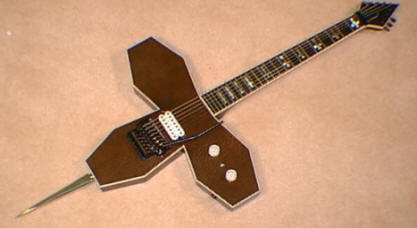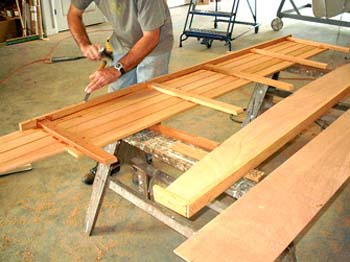A brother in Christ has brought to me his dear Takamine 12-string after a tragic incident that occurred in his house. Fortunately only his 12-string was affected and nobody was harmed, Praise God. He told me to be wary of IKEA shelves, don't load it with too much weight ... his Takamine 12-string has suffered impact blows from a string of falling objects when his IKEA shelves gave way to the constant loading from the items they were supporting. The impact has resulted in a broken headstock. It was indeed a guitar lovers' nightmare, equally to a guitar restorer ... This is one of those challenging restoration jobs that are talked about ...
This brother is a close friend. I took up this challenge as a way to reciprocate my gratitude towards him for being a brother in Christ and a faithful friend to me.
Lets' take a look at the start state. The headstock was totally severed from the rest of guitar.
 |
| The broken Takamine 12-string |
A close-up on the matching members
 |
| Guitar in parts of neck and headstock |
Fortunately or usually, such cracks are repairable. You can also see the severed fibres are perfectly matching to each other.
 |
| Headstock Front |
Closed-up
 |
| Headstock Back |
After studying the mechanics of the crack and the wood grains of the neck, time to get started.
Some wood splints and chips were carefully removed from the crack areas to avoid possibility of weak sealing between the crack areas when glued. The easy part was to glue the two parts together.
 |
| Glued and clamped |
The wood glue needed only 30 minutes to set but it was recommended to not stress the glue joins within 24 hours.
 |
| Curing for the next 24 hours |
After the glue has cured for 24 hours, the clamps and wooden blocks were removed. Usually the excess glue will ooze everywhere and cleaning was inevitable.
 |
| Glued Headstock Front |
Glue marks were easily visible.
 |
| Glued Headstock Back |
This is a 12-string, and my brother told that he has no intention to load all 12 strings on it from this point on. So he said I didn't have do a lot, just glue it back will do. However, it woud be hard to believe that the glue will be able to hold the tension exerted by all six strings. More has to be done ...
I think that both front and back of the headstock need to be reinforced. So I begun from the back.
 |
| Cutting a seat for the mahogany stripe |
I used a piece of hardwood (mahogany) to reinforce the weakest part of the guitar neck.
Gluing again ...
 |
| Same rules apply ... 30 minute/24 hour |
After glue is cured.
 |
| The mahogany is inserted into the seating |
I went on to work on the headstock front
 |
| A square seating was cut into the headstock front |
The tricky part ... the square seating was cut according to the size of the reinforcement wood. In this case, I should have used tonewoods but I didn't have any of the shape and size readily. Nevertheless, a piece of hardwood was used for reinforcement.
Gluing again ...
 |
| Same thing ... 30 minutes/24 hours |
When the glue was cured.
I didn't think that my friend was going allow the two reinforcement woods to stick out like sore thumbs, so the excess wood must be removed.
 |
| Reinforcement wood seated snugly |
 |
| Sanding down |
 |
| The Headstock Back |
Most sanding and shaping work were done finally. Next, I went on the stain the reinforcement woods to blend into the guitar neck.
 |
| The back, after staining |
 |
| The Front, after staining |
For the headstock front, the reinforcement wood needs to be varnished.
 |
| Clear Satin varnish was applied to the demarcated area |
Buffing ... the back
 |
| Not perfectly concealed but it was smooth to touch |
the front ...
 |
| Pretty blended |
This dear friend of mine usually forgets a thing or two ... there was no guitar nut when he handed the guitar to me. So I was left with the options to buy a standard 12-string plastic nut, or hand-craft one. For this friend, I have decided to hand-craft a 12-string guitar bone nut ... oh dear ...
However, he has emphasized that this guitar was not going to hold 12 guitar strings anymore but I have cut light marks for the high octaves strings set in case he changes his mind later on. You might be able to see in the pictures below.
 |
| The 12-string bone nut |
From the side
 |
| Nut seated snugly |
The Headstock Front
 |
| The Headstock, Strung |
The back
 |
| The Back |
Finally, the completed work! My dear friend's 12-string has been restored and road ready again! It was tough but it was rewarding to see it through.
 |
| It is finished! |
Praise the Lord for seeing me through this entire process.





























































